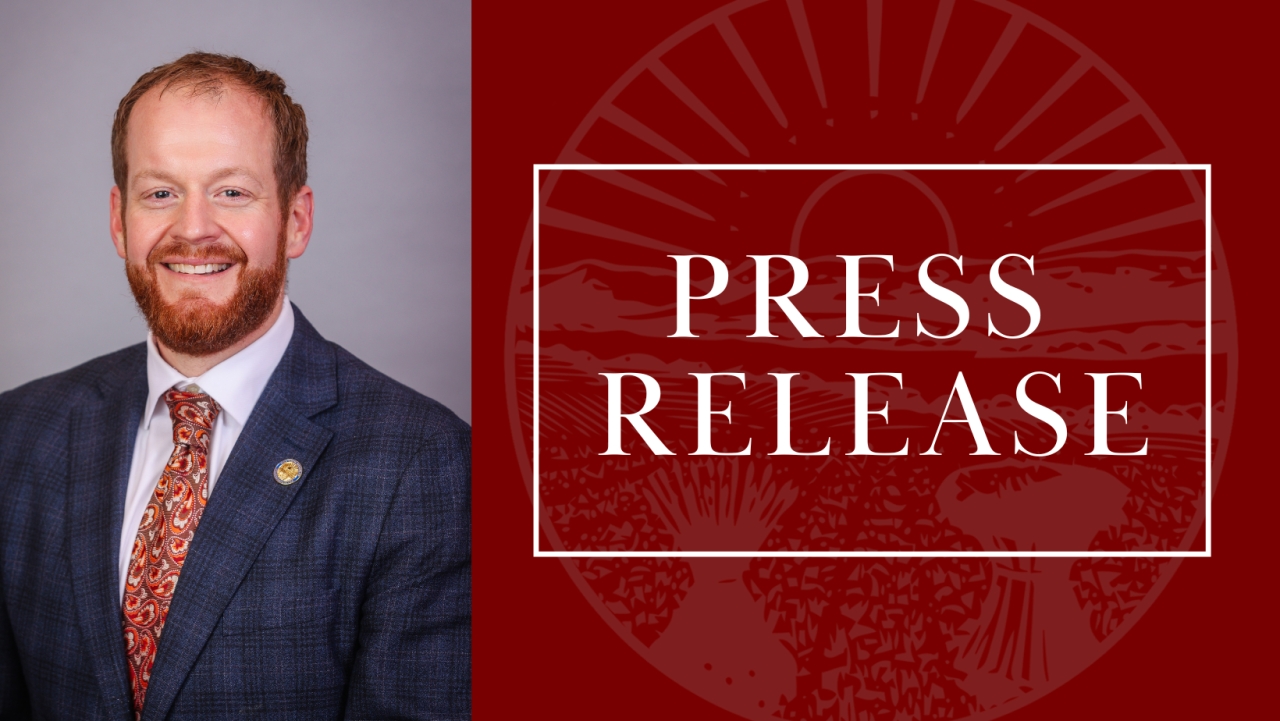Rep. Kishman Votes on Budget Plan that Delivers Historic Property Tax Relief for Ohioans, Implements Flat Tax

State Representative Matthew Kishman (R-Minerva) today announced that the Ohio House of Representatives approved the conference committee report for Am. Sub. House Bill 96 –the State Operating Budget. The budget plan, which allocates funding for state programs and operations for the next two years, includes provisions that aim to protect freedom, family and fiscal responsibility – approving historic property tax relief for Ohioans, implementing a flat tax rate and providing a record amount of state funding for school districts.
“This budget checks critical boxes for Ohioans, delivering property tax relief, funding for our schools, and brings in money for projects and programs in the district,” said Kishman.
Those projects and programs include:
- The Regional Transportation Improvement Program (RTIP) for U.S. Route 30 expansion project through Carroll, Stark, and Columbiana counties
- Challenge Ministries
- The Legacy Project of Stark
- The Stark Education Partnership
- The Rural Transportation Program
- Financial Literacy and Workforce Readiness Programming Initiative
- Camp Invention
- Ohio Alliance of Boys & Girls Clubs
DELIVERING HISTORIC PROPERTY TAX RELIEF TO OHIOANS
Ohioans all over the state have called on the legislature to tackle rising property taxes, and members of the Ohio House are providing historic relief for taxpayers as soon as January 2026. The budget implements a process for schools that carry forward more than 40% of their general budget in unspent cash at the end of each year to be distributed back to Ohioans in property tax relief. District cash carryovers have increased year-over-year from $3.6 billion to $10.5 billion since tracking began in 2012. Utilizing carryover data from 2024, and assuming school district carryover amounts remain similar, the plan will save Ohioans over $2.5 billion in property taxes starting next year.
LANDMARK PROPERTY TAX REFORM
In addition to billions in direct relief, the bill makes a variety of structural changes that aim to promote transparency, update the levy process and enhance checks and balances for property tax rates at the local level, ensuring that taxpayers see more direct control over ballooning property tax bills. The bill also provides direct relief to residential homeowners by allowing the Board of County Commissioners to provide up to a 2.5% owner-occupancy tax credit on a taxpayer’s bill (modeled off the state’s current owner-occupancy credit) for all residents and a permissive homestead exemption for those who qualify for the state homestead exemptions.
A STRONGER ECONOMY WITH A FLAT TAX
Republicans in the legislature have continued to phase down the state income tax in recent years, providing savings for Ohioans. The new budget plan takes the top tax bracket down from 3.5% to 3.125% in tax year 2025 and down to 2.75% in tax year 2026, and into the future. The move to a flat tax makes Ohio more competitive with surrounding states, simplifies the tax code, and spurs revenue.
BOOSTING FUNDING FOR OHIO SCHOOLS
The budget prioritizes the education and well-being of Ohio students, ensuring that school districts are funded through the final phase of the Cupp-Patterson funding model. Ohio public schools will receive nearly $700 million more for public education over the biennium than they received in FY25.
REVITALIZING LOCAL COMMUNITIES
House Bill 96 continues to invest in various state initiatives that help solidify Ohio as the best place in the nation to live, work, raise a family and start a business. The bill increases funding for Brownfield Remediation, provides funding to help with blight, continued investments for the All Ohio Future Fund, further expands the Welcome Home Ohio program, and helps address the housing shortage across the state through two new targeted initiatives designed to incentivize additional single family home construction.
SUPPORTING OHIO FAMILIES
To help families who need assistance paying for child care, the budget establishes the Child Care Choice program, providing $100 million for eligible families, helping more Ohioans cover the cost of needed child care services. The bill also increases funding for the Help Me Grow program, which is a system of supports for pregnant women, caregivers with new babies, and families with young children with developmental delays and disabilities.
PRIORITIZING WORKFORCE READINESS AND HIGHER EDUCATION
This budget makes a marked effort to prioritize workforce readiness in Ohio, investing in various higher education programs such as the Governor’s Merit Scholarship, the Choose Ohio First Scholarship, and an increase in the State Share of Instruction by 1% each year, helping lower costs for students at Ohio’s state institutions of higher education.
¿House Bill 96 now goes to the Governor for consideration.







